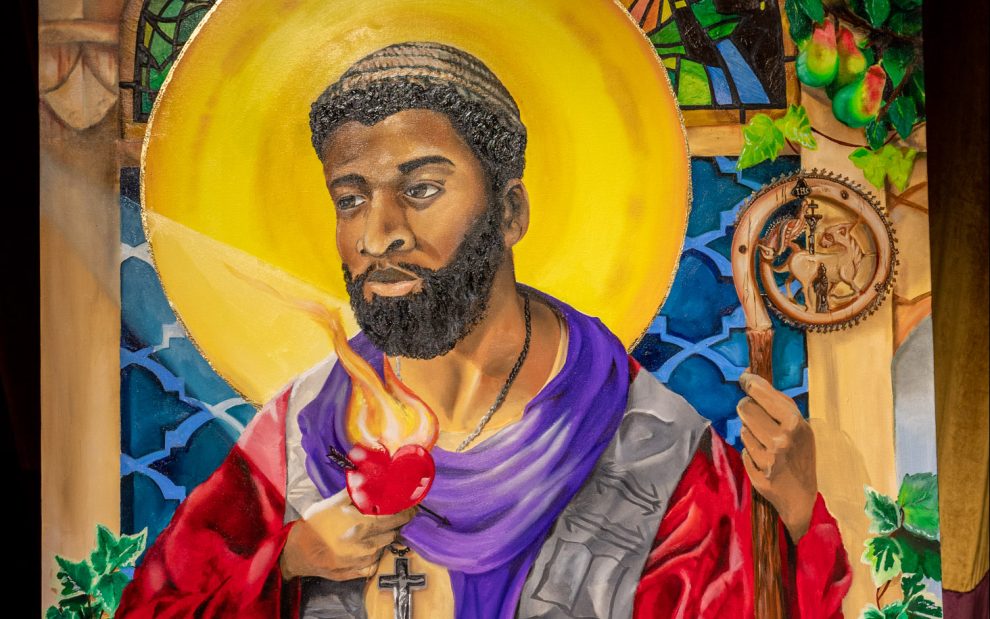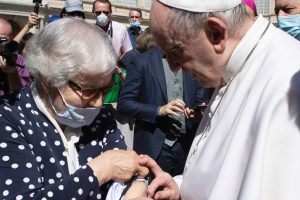St. Augustine was an African man. For many years, I didn’t appreciate the magnitude of this because his African identity was usually muted in favor of describing him as a North African citizen of the Roman Empire with a distinct emphasis on “North” and “Empire.” Currently, the United States Census classifies individuals of Middle East and North African (MENA) descent as white. Consequently, emphasizing that St. Augustine was North African allows him, especially in the United States, to be racially coded as white. At the very least, it allows for deemphasizing his Amazigh origins—the endonymic term for the people of North Africa.
Villanova University, one of two Augustinian higher education institutions in the United States, seeks to shift the narrative around St. Augustine through its ongoing commitment to become an anti-racist institution. An initiative that promises to be hugely consequential for Villanova came to fruition on November 3, 2022, when the university’s president, Augustinian Father Peter Donohue, unveiled a newly commissioned portrait of St. Augustine. Now part of the university’s permanent art collection, An Unlikely Aquilegia: North African Saint of Hippo was created by Texas-based artist, Vernon Adams. At a time when universities are divesting from their art collections, Villanova is investing in new art. The painting created by Mr. Adams depicts St. Augustine as an Amazigh man and bishop thus, celebrating his authentic heritage. In coordinating this project on behalf of the president’s office, I knew it was important that a Black artist was selected for this commission because of Villanova’s commitment to anti-racism and our desire to be intentional around how Villanova provides thought leadership on St. Augustine. It was equally important to have a Catholic artist who could convey the spirituality and Augustinian charism that are integral to Villanova’s mission.
This painting invites a new conversation around St. Augustine. In the context of long-standing and lingering consequences of slavery and colonialism, this artwork invites us all into conversation around what it means for the Catholic Church to have an African man as one of its greatest writers and thinkers. For generations, Africa was continually robbed of its greatest treasures—its people—through the horrors of the transatlantic slave trade while the continent’s natural resources were confiscated or decimated by colonial powers. Yet, throughout all of that time and into the present-day, the church and scholars of theology, philosophy, and literature alike have considered the works of St. Augustine—an African man—as some of the greatest writings ever produced. In order to reconcile the two, St. Augustine’s African identity had to be suppressed by racially coding him as white. We are now in a moment where we can reckon with that long-standing dissonance and pivot away from that coding while affirming St. Augustine’s African identity.
By depicting St. Augustine as an unabashedly African man, the painting invites all those who engage his writings including students, scholars, and members of the religious order that bears his name, to reconsider how we have thought about him. It also invites us to learn more about the Amazigh people—an ancient, diverse, culturally rich community found across the entirety of North Africa. Depicting St. Augustine as a Black man actively decenters whiteness and demands that we all recognize what it means for the church, the academy, and the world to acknowledge the depth and breadth of the intellectual and cultural gifts Africa has given the world. Centuries of slavery and colonialism not only robbed the African continent of so many of its treasures, but also robbed Africa of credit for those treasures. By racially coding St. Augustine as white, he became one of those treasures for which Africa was not given due credit. This painting compels us to think of St. Augustine as an African man and render to Africa that which is Africa’s.
Since the unveiling, An Unlikely Aquilegia has been very well received. Perhaps the most moving response came from Augustinian Father John Abubakar—a visiting professor at Villanova. Father Abubakar, who is originally from Nigeria and the former Provincial of the Augustinian Province of Nigeria, visited my office to see the painting up close. Almost immediately after I removed the cover he said, “His nose is like mine. He is African!”
Image: Photo of artist Vernon Adams’ painting An Unlikely Aquilegia: North African Saint of Hippo. Courtesy of the Office for Mission and Ministry, Villanova University.













Add comment